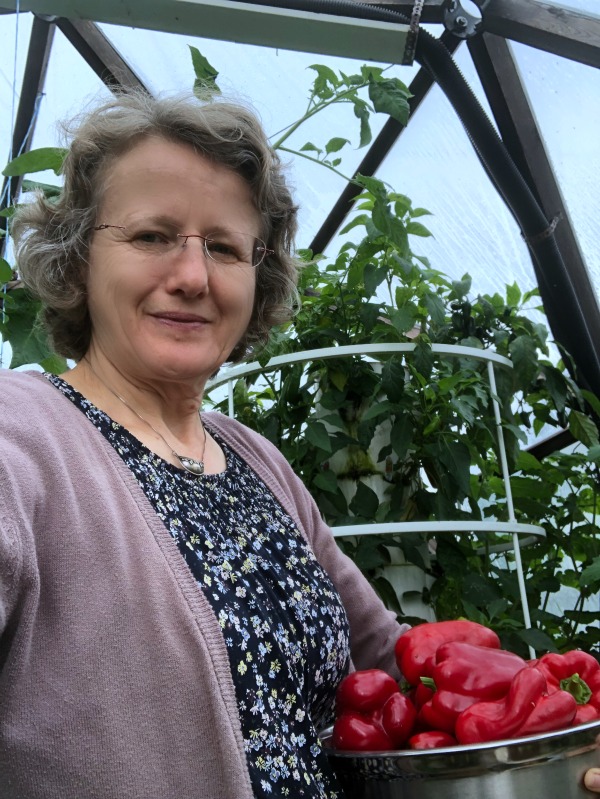
Growing peppers in a cold climate is in many ways similar to growing tomatoes, but still different. Tomatoes are more popular, more forgiving, and a bit easier to grow. Overall though if you are successful in growing tomatoes, peppers can be your next thing to conquer.
We love to grow peppers. There are so many delicious recipes that call for peppers. Peppers are also on the dirty dozen list and expensive to buy organic. It makes sense to grow our own.
Choose an early pepper variety
To grow peppers in a cold climate and short growing season successfully, choose an early pepper variety.
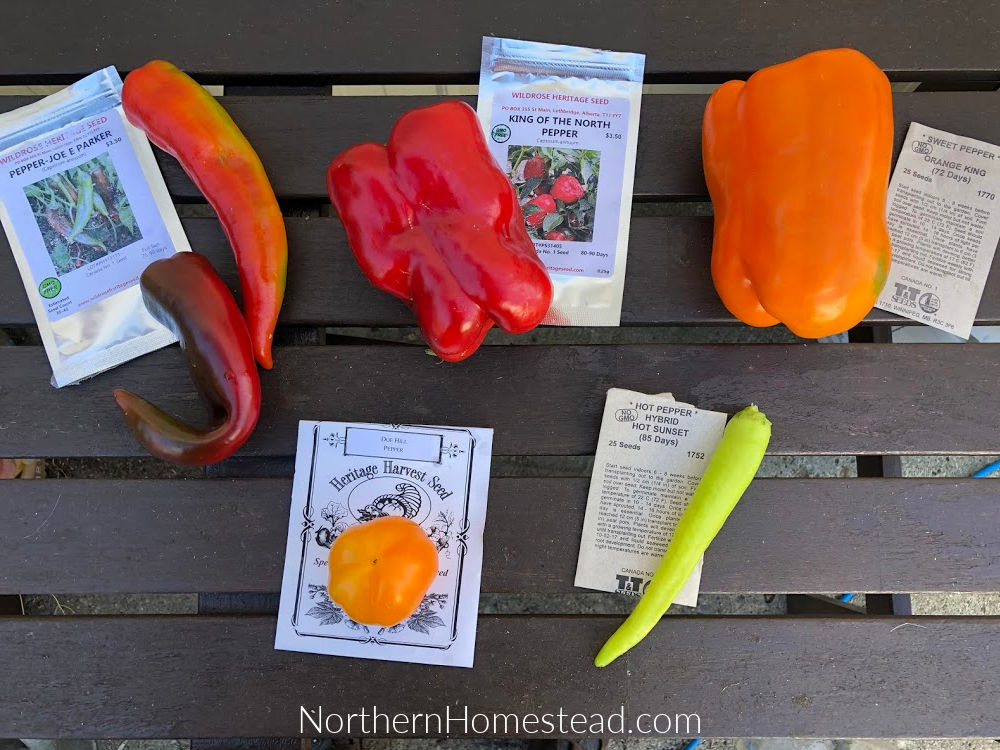
With early, we mean that the days to maturity should be below the number of frost-free days in your area. We have about 100 frost-free days, so the peppers we grow need to be below that to get a bit of a harvest window. There are many choices for early pepper varieties. Here are some that we have successfully grown in our garden:

- Early Jalapeno (70 days) Productive.
- Red Bulls Horn (80 days) Sweet Italian heirloom.
- Doe Hill (60-65 days) Very tasty and beautiful yellow tomato pepper.
- King of the North (70 days) A pepper that actually matures in a short season, a favorite.
- Orange Bell (85 days) Tasty.
- Orange King (72 Days) Thick-skinned large sweet peppers, a favorite.
- Canoncito – Early, vigorous, and packing some heat, but not crazy.
- Joe E Parker (75-95 days) Mildly hot Anaheim pepper type.
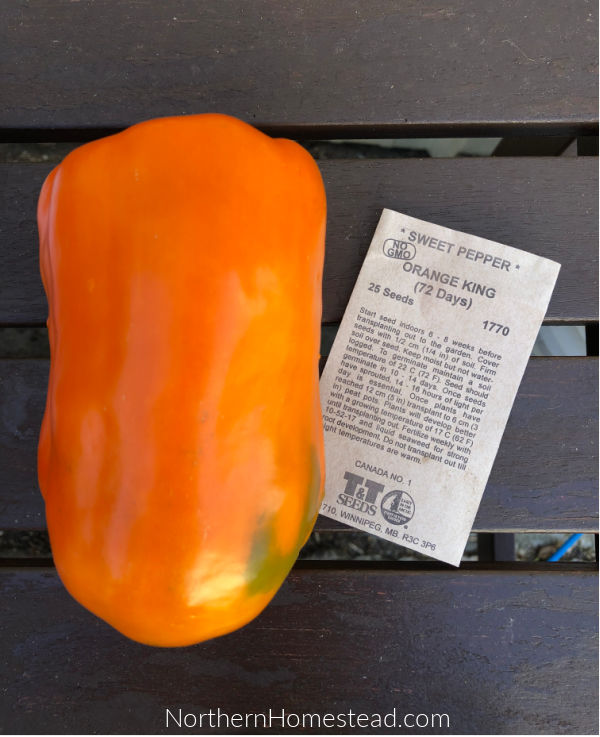
As with any seeds it is best to get them from local growers, or a climate similar to yours. Those plants have already been adapted to the weather and will grow and produce better.
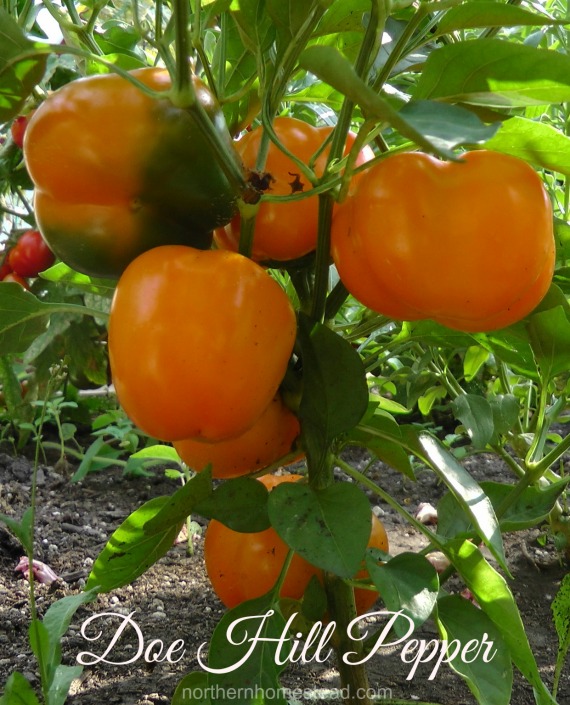
Soil or hydroponics
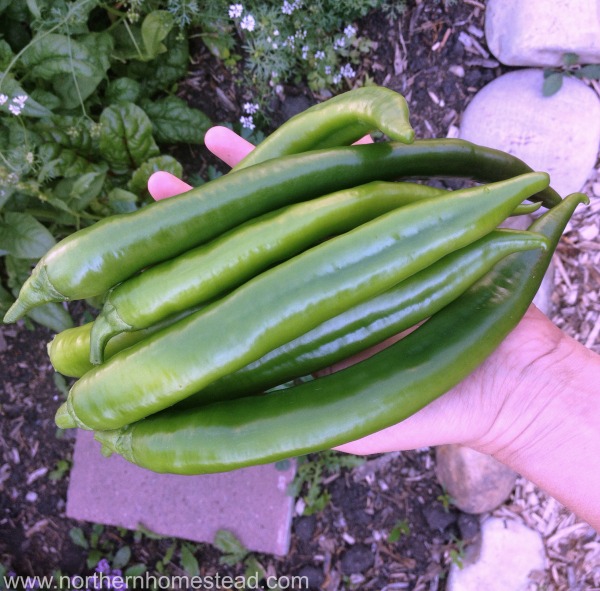
Growing peppers in good organic soil, mulched with compost is best. We find that taste-wise the soil-grown peppers are better than hydroponically grown peppers. Often they are larger but take longer to mature so at the end of the season many are still green.
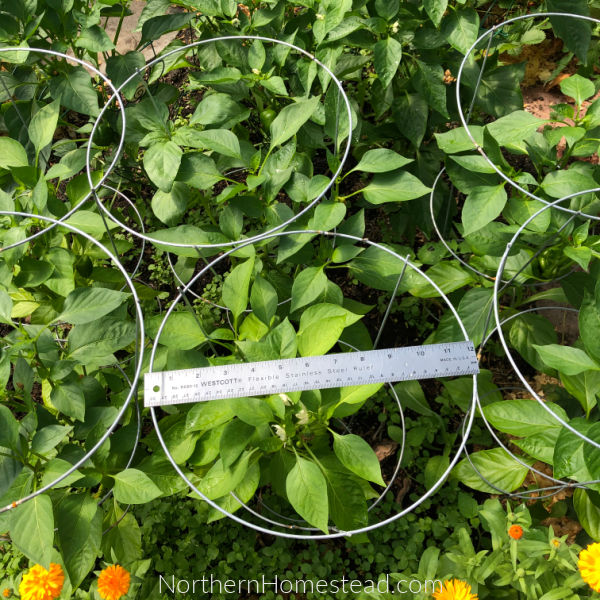
Peppers seem to love it to be a bit crowded. They can be planted quite densely. The square foot garden book recommends one plant per square foot. Containers are also a great option. Use compost-rich soil and water regularly.
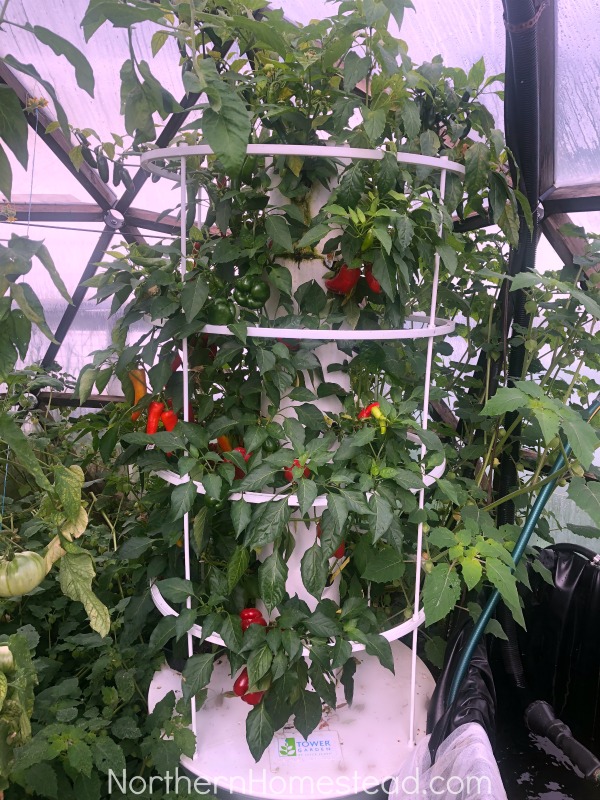
We grow many of our peppers in the aeroponic Tower Garden. It does not matter what system you use, but aeroponic (meaning the roots are in the air and get watered with nutrient solution) simply allows plants to grow about 30% faster. This advantage is what moves us to grow them in aeroponics. Growing them in the Tower Garden allows us to grow them vertically, another advantage in a small garden or greenhouse.
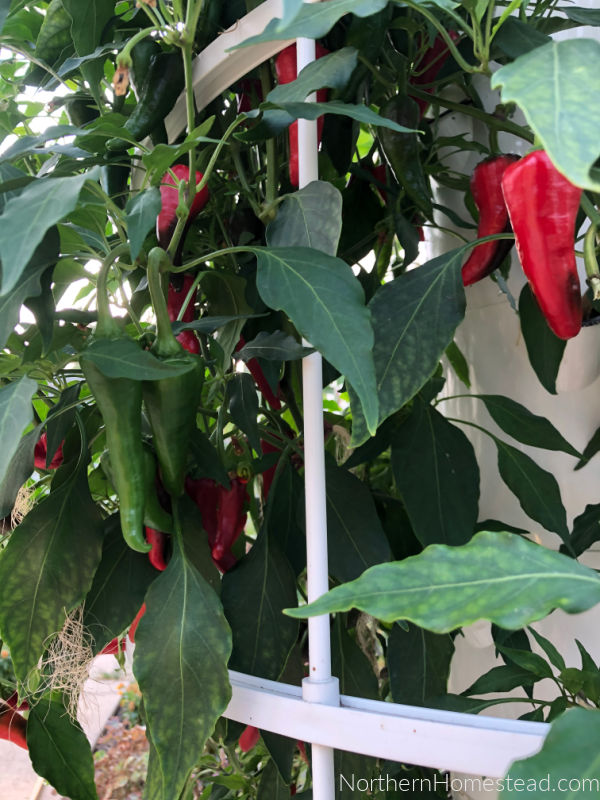
Since the alternative to homegrown peppers are store-bought hydroponic peppers, we prefer to grow them ourselves. Yes, most greenhouses today do grow things also in water instead of soil.
Note: We do not sell or promote the Tower Garden for money. In fact, I wish the Tower Garden would be available other than through a marketing company. The cost is high, but the product is good. A DIY option could be an NFT system.
Start peppers indoors about 8-10 weeks prior to planting them out
In our area, the last frost date is May 26. Start the seeds indoors in mid to end of March. You want the seedling to be just about setting out buds but not blooming yet. Peppers like it warm. If you plan to grow peppers in the open, wait another week or two after the official last frost day.
Just like with tomatoes we do not rush seed starting. The reason is that later started summer crops grow faster and young seedlings transplant better. This way the plant does not have to go through a transplanting shock, and we get beautiful peppers sooner.
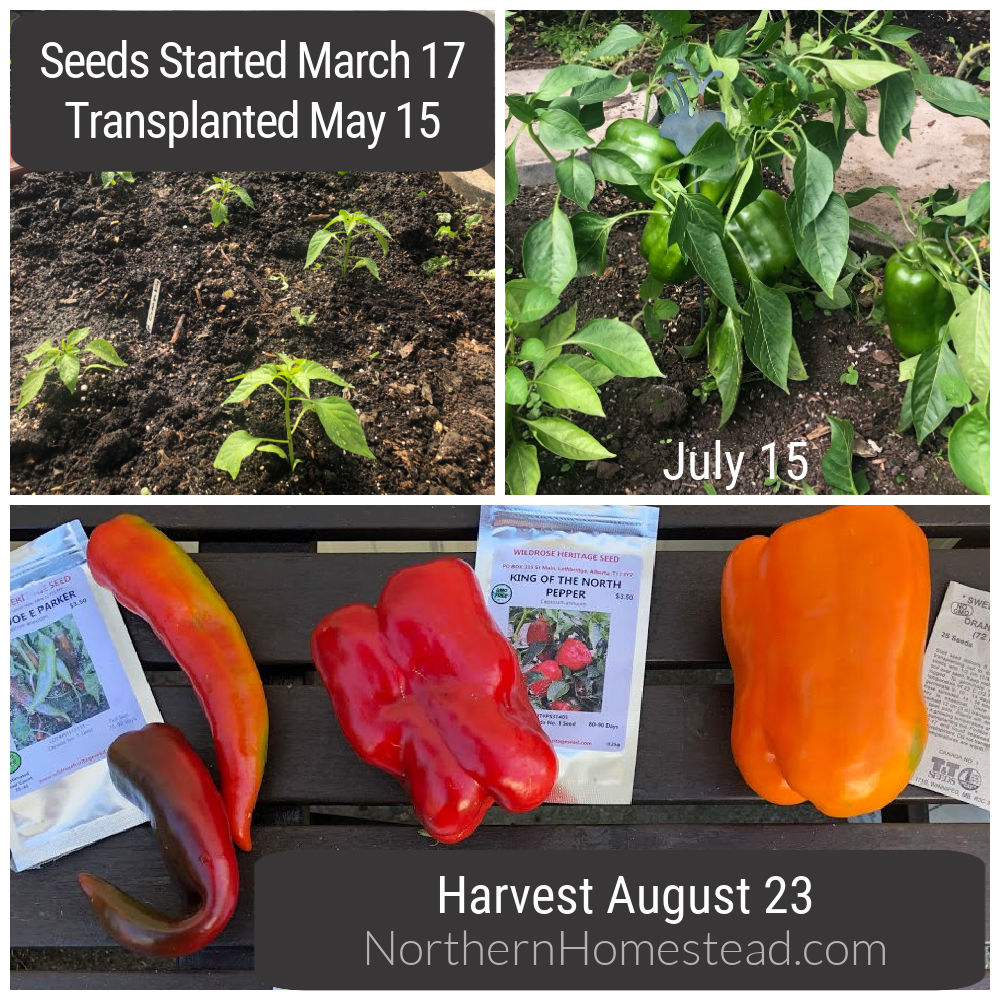
Use good potting soil instead of seed starter soil. The plants will be in that soil for several weeks and need nutrients to grow. Read more on starting seeds indoors here: Starting seeds indoors.
Wait till all danger of frost is gone before planting the pepper seedlings into the ground. If you choose to grow peppers in containers, they can be planted earlier and brought in for cool nights.
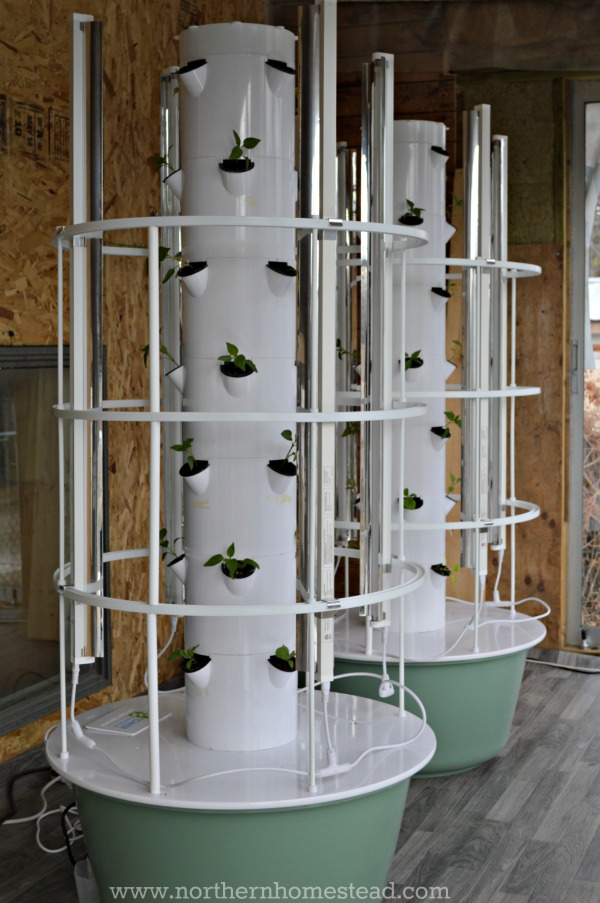
Since plants in aeroponics grow fast we start the hydroponic seedlings 6 – 8 weeks prior to being able to move the plants outside or into the greenhouse. The plants do not need to be transplanted, we just move the whole Tower Garden out. Read more on planting a hydroponic garden here: Planting a hydroponic garden.
Pruning back seedlings yes or not?
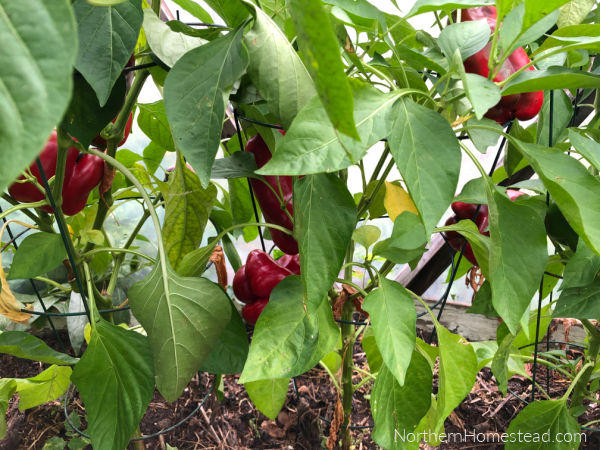
Many growers like to start pepper seeds very early, let them grow a bit, and then cut the seedling back. The theory is that the seedling will branch out when pruned back. And that is true. However, a not pruned back seedling branches too. Early pepper varieties in our experience branch into 2 -4 stems naturally.
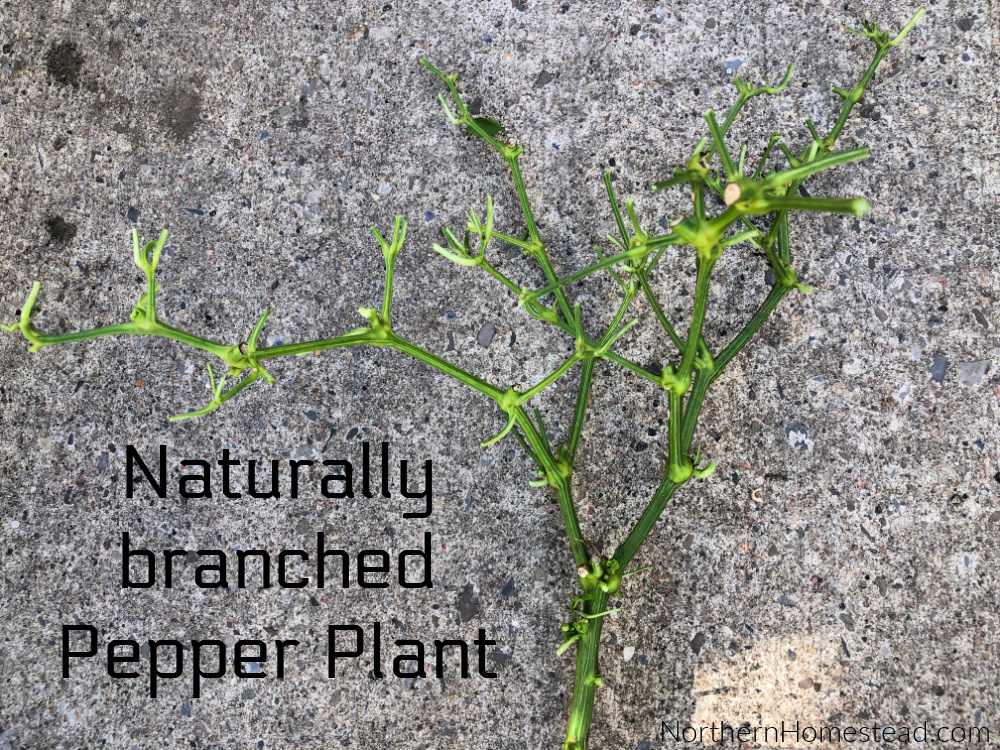
Here I made an end-of-season picture of a pepper plant that was never pruned back. I took the leaves off so the structure could be better seen. As you see it did not just branch at the start but continued to branch as it grew.
Personally, we see no reason to force branching.
Choose a perfect location
Peppers are a summer crop and prefer a warm, well-drained spot. In a cold climate, a greenhouse or a south-facing hot microclimate is best for them.
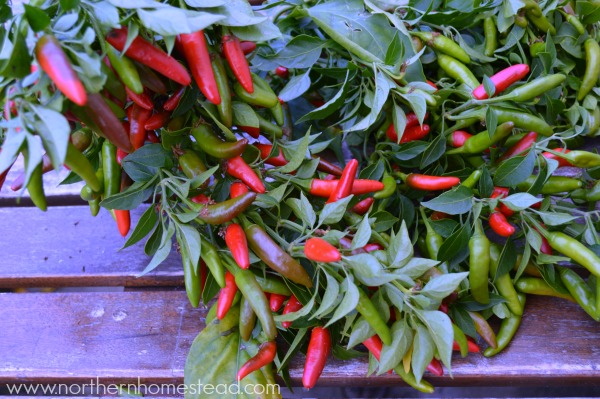
A warm spot on your deck can be a great location for peppers grown in containers or grow bags. See how to grow in grow-bags.
The Tower Garden alongside a south-facing wall does well, but even in hydroponics peppers do better for us in a greenhouse.
To grow peppers in an open garden in a cold climate is often not worth it. If growing in soil, they do best in a greenhouse.
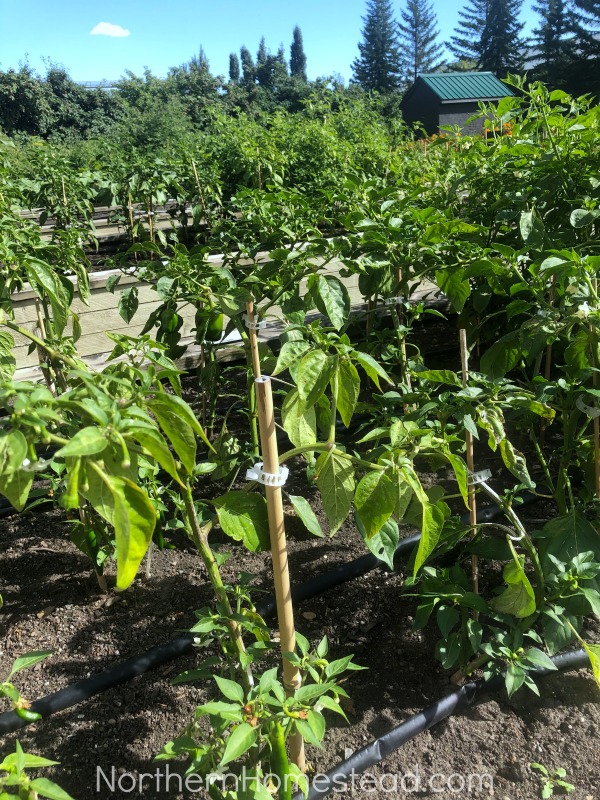
Even in raised beds in a sheltered location, they do not grow well as the picture above shows a local demonstration garden. The fruit did set, but it is still very small even at the end of the season.
Note, I’m aware that your summer is probably at least a few degrees warmer than in our area. If your night temperature does not fall regularly below 10C (50F), you might have better results growing peppers outside. Just know, peppers are heat-loving plants.
However, peppers do not tolerate too much direct sunlight on the fruit. If there are not enough leaves to cover the fruit, give it some shade with a shade cloth.
Protect pepper plants
Peppers like it warm. In case of a cold spell, give them as much protection as you can. I like the Plant Protection Blanket, it is light weighted and can be left on for days, as needed. You can cover a whole bed with it, or wrap an individual plant.
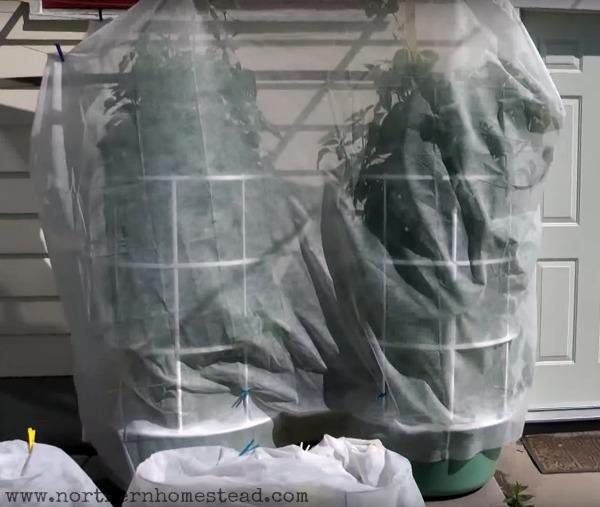
As I mentioned above, the fruit does not tolerate too much direct sunlight. The protection blanket is also great for that.
You can also create a micro-climate by building a wind barrier for the plants out of recycled windows or by building a window-protected garden bed.
Aphids love peppers
We have tried to grow pepper plants indoors in our window garden room. It is nice and warm there and it seems like the perfect location to grow peppers. However, because aphids love pepper plants, it is a constant battle.

In the greenhouse pepper plants are also often infested by aphids. We shower them off with a garden house as needed to reduce the population of aphids. Otherwise, we just leave them alone.
Usually, as the plants get stronger the aphids don’t do too much harm to the plants. Also, as the season progresses, in an organic garden lady bags and other beneficial insects move in and keep the aphids at bay.
Watering the pepper plants
Pepper plants do not need constant watering. Keep them moist but not wet, much like tomato plants.
Watering plants with tap water is too cold for heat-loving plants. It is better to use stagnant water that is warmed up from the sun. That way the plants will not go into shock every time you water.
If you grow in water instead of soil, add a water heater in spring and also at the end of the season. If the summer nights are cool, you can also have a heater on a timer to heat only during the night.
Pruning and support
Pepper plants are just like tomatoes from the nightshade family. They also come determinate – bush type, and indeterminate – vine type, varieties. Personally, I have only seen vine-type peppers in a commercial greenhouse. For home use, especially early pepper varieties are normally bush-type peppers. A bush pepper plant does well in a cage to support it.
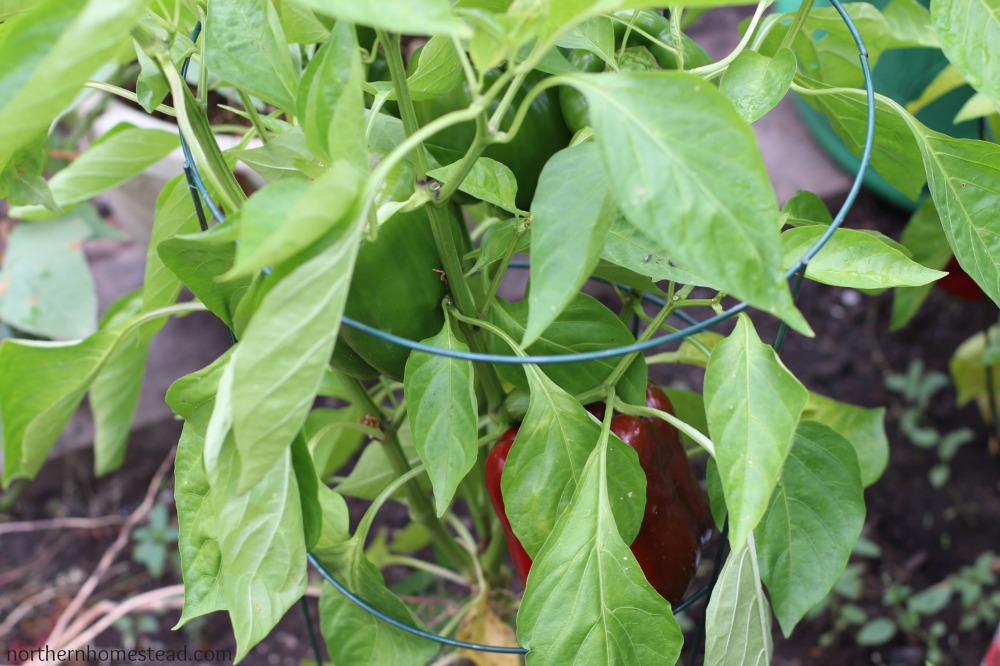
We do not prune our pepper plants at all. As mentioned above, some growers like to start plants very early, only to prune them back to force branching. It is an option, we haven’t found it to be necessary.
You can prune pepper plants back at the end of the season and bring them inside. They will overwinter and continue to grow next spring.
Ripening peppers indoors
In a cold climate and short growing season, we are often left with a fair amount of green peppers. Green peppers are great tasting too and can be used as-is. However, the question came up can peppers be ripened indoors just like we ripen tomatoes?
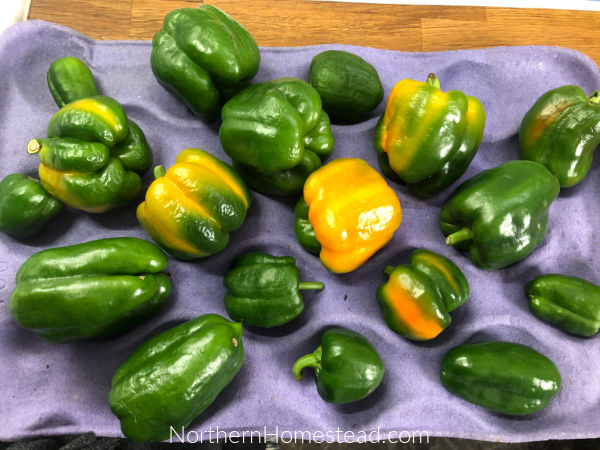
It seems that the results are very mixed. Trying it myself, I think it more depends on the variety. Some seem to turn color and some don’t. Also, of course, it depends on the maturity of the fruit.
To ripen the peppers quicker they need to be in a warmer place which leads to drying out. In the end, they are not as crispy as freshly harvested. Wrapping them in newspapers or storing them in a brown bag would help some with that.
My conclusion was that it is not worth it. Use the juicy green peppers instead.
Preserving peppers
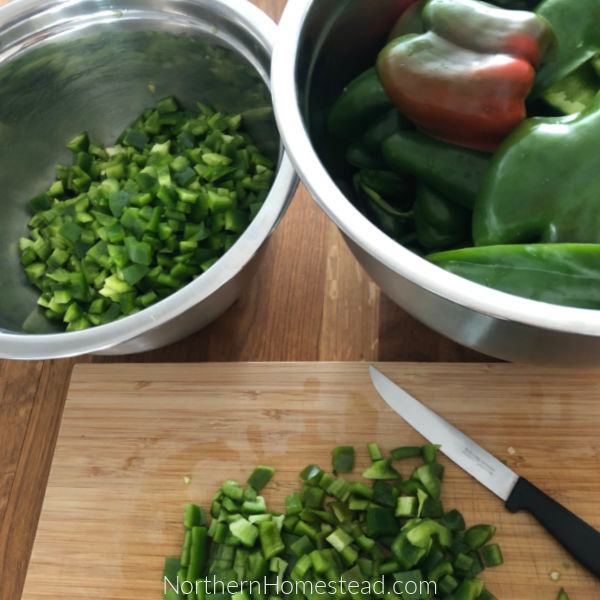
We use peppers mainly in cooking. For that peppers can be diced and frozen. Blanching is not needed.

We also love pickled hot peppers, fermented hot pepper paste, and canned bell peppers. See our favoring Lecho recipe here. Many of our canning recipes ask for peppers both sweet and hot.
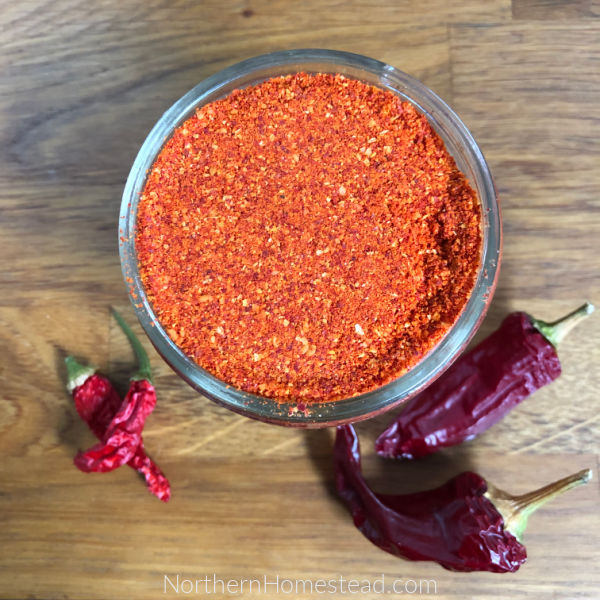
Make your own hot pepper flakes or powder.
Growing peppers in a cold climate has been a great experience, and every year we seem to learn more.
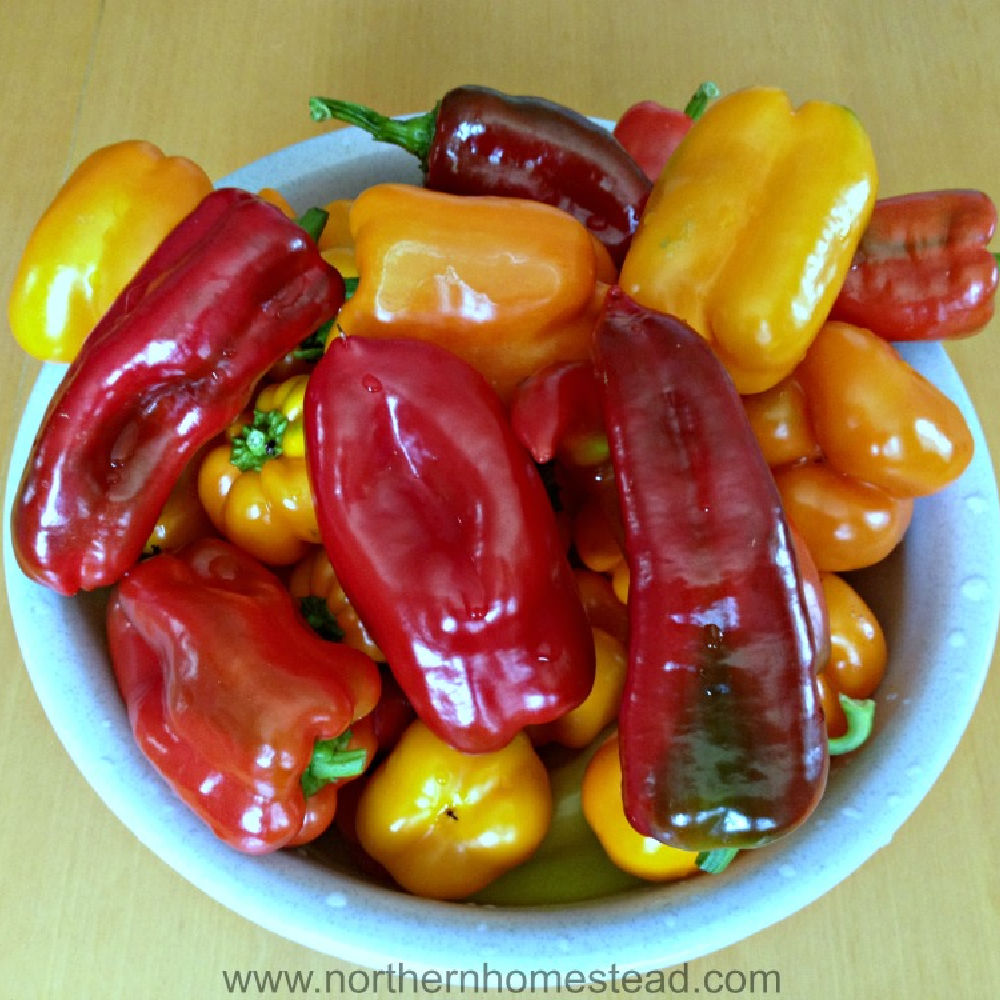
Do you grow peppers? Please share your best-growing peppers tips with us.
If you like this post don’t forget to subscribe to Northern Homestead and follow us on Instagram, Facebook, or Pinterest for the latest updates.
Since growing peppers is so similar to tomatoes, here are

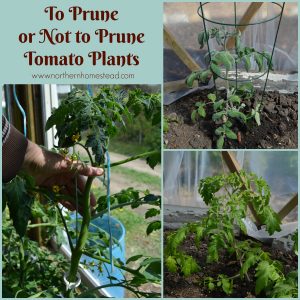
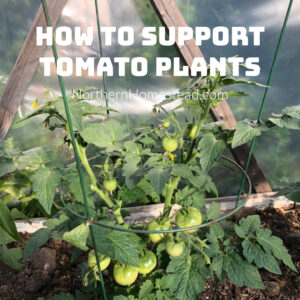
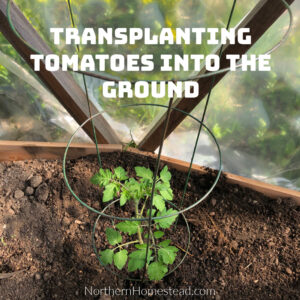
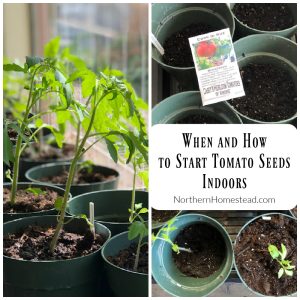
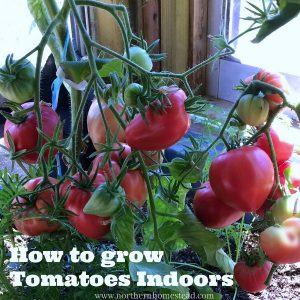
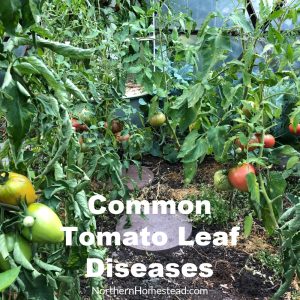

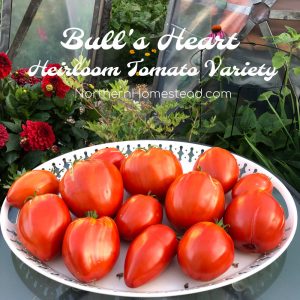
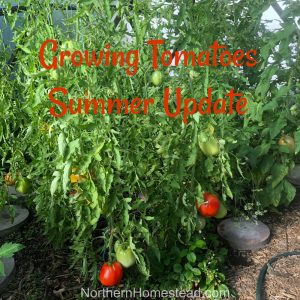
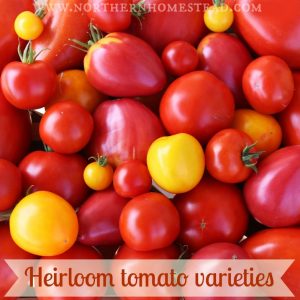

Thanks for sharing your garden lifestyle with us. I loved and thanks for sharing with us. We all learn from one another and we enjoy too.
Thanks
Almas Nathoo
You are welcome, glad it is helpful.
I was given a pepper plant and it is producing nicely. It is in a pot so can bring it in and out. Good to know about the sun and water requirements; was wondering about overwintering and will give it a try.
Awesome, you should have a great start next year.
Thanks for the comments! Your experience matches mine in northern Minnesota. I don’t do Pinterest, Facebook or Instagram….any other way to subscribe?
We had to do some maintenance, so the email subscription was temporarily not available, sorry. It is working now.